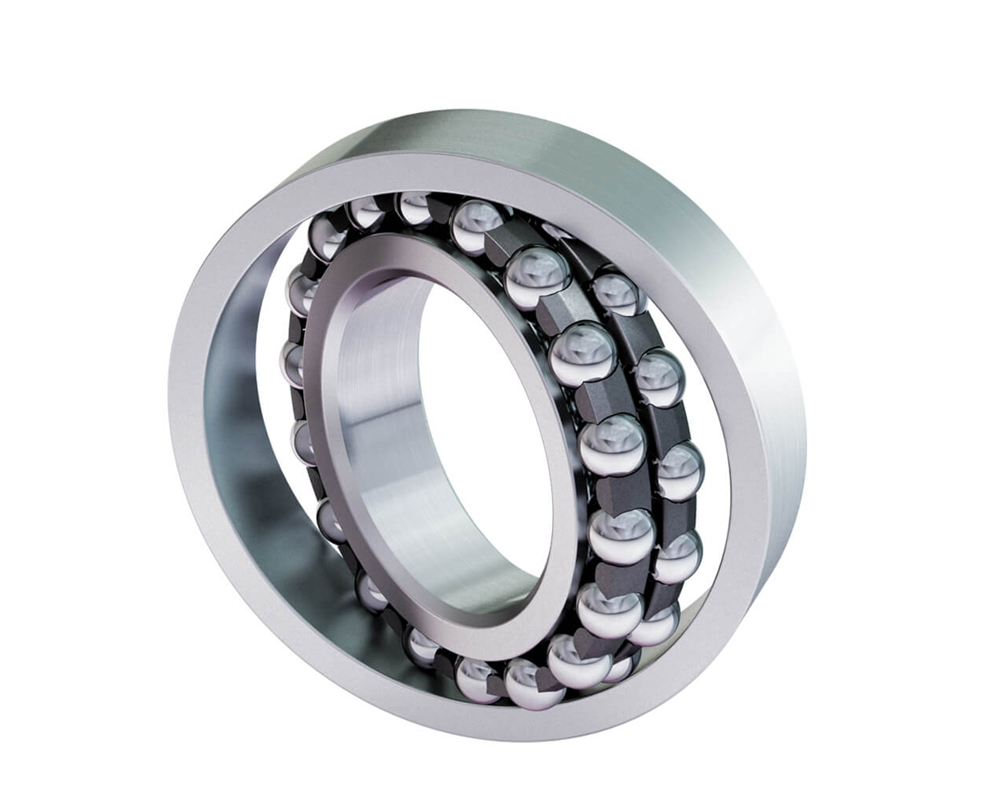Newsroom
Characteristics and Parameters of the 2319 Bearing
2022-06-10Characteristics and Parameters of the 2319 Bearing
I. External Parameters of the 2319 Bearing
1.1 Shape Parameters
The 2319 bearing is a self-aligning ball bearing, with the main shape parameters as follows:
Inner Diameter (d): 95 mm
Outer Diameter (D): 200 mm
Thickness (B): 67 mm
The design of this bearing allows it to self-align within the bearing housing, accommodating axial and radial loads caused by installation errors or shaft misalignment. The structural design of the 2319 bearing provides good stability and durability when bearing loads.
1.2 Other Parameters
In addition to the basic dimensional parameters, the 2319 bearing also has the following characteristics:
Weight: Approximately 9.86 kg
Material: Typically made of high-quality alloy steel, offering good wear resistance and fatigue strength.
Sealing Type: Available in open or sealed designs based on requirements; the sealed type effectively prevents contaminants from entering the bearing.

II. Performance Parameters of the 2319 Bearing
2.1 Load Capacity
The basic rated load capacity of the 2319 self-aligning ball bearing is one of its important performance indicators. Depending on the manufacturer, the basic rated dynamic load (C) and static load (C0) of the 2319 bearing may vary. Generally, the dynamic load capacity of the 2319 bearing is about 50 kN, while the static load capacity is approximately 30 kN. This allows it to withstand significant loads in many industrial applications.
2.2 Speed
The limiting speed of the 2319 bearing is typically around 2000 rpm, depending on lubrication conditions and working environment. To ensure the normal operation of the bearing, it is recommended to control the speed within a safe range in practical applications.
2.3 Temperature
The operating temperature range for the 2319 bearing is usually between -30°C and +120°C. At higher temperatures, the viscosity of the lubricant decreases, which can affect the bearing's performance. Therefore, when used in high-temperature environments, it is necessary to select suitable lubricants.

III. Key Points for Selecting the 2319 Bearing
3.1 Application
The 2319 bearing is widely used in various types of machinery, such as:
- Construction machinery (e.g., excavators, cranes)
- Machine tool spindles
- Agricultural machinery
- Conveying equipment
- Household appliances
When selecting the 2319 bearing, it is essential to consider the load and speed requirements of the specific application scenario.
3.2 Sealing Type
Depending on the working environment and requirements, the 2319 bearing can be chosen in either open or sealed type. Sealed bearings are suitable for environments with high dust and contamination levels, effectively extending the service life of the bearing.
3.3 Material
The material of the 2319 bearing self-aligning ball bearing is generally GCr15 or GCr15SiMn steel. GCr15 steel has excellent wear resistance and impact performance, and its heat resistance is better than that of ordinary steel; GCr15SiMn steel offers superior wear and impact resistance compared to GCr15 steel but has slightly lower heat resistance. Therefore, the appropriate material should be selected based on the usage conditions.
3.4 Grease
Selection of Grease
Lubricants are generally divided into oil lubricants and grease lubricants. Lubrication is a critical issue for performance. The suitability of the lubricant or lubrication method significantly affects the bearing's lifespan. The functions of lubrication include:
1. Lubricating all parts of the bearing, reducing rolling friction between the raceway and balls, sliding friction between balls and cages, and sliding friction within the guiding surfaces of the cage.
2. Carrying away heat generated from internal friction and other heat from external sources, preventing overheating of the bearing and degradation of the lubricant.
3. Ensuring that a proper oil film is formed on the rolling contact surfaces of the bearing, alleviating concentrated stress from impact loads and extending the bearing's fatigue life.
4. Preventing rust and corrosion of the balls, raceways, and cages, as well as the intrusion of debris, foreign objects, and moisture, thus providing rust and dust protection for the bearing.
Grease can be categorized based on its allowable working temperature. The consistency and lubricating ability of the grease are influenced by working temperature; bearings operating at certain temperatures must select grease with the correct consistency and good lubrication effect at the same temperature. Grease is manufactured for different working temperature ranges, categorized as low-temperature (lt), medium-temperature (mt), and high-temperature (ht) greases. Additionally, there is a type of grease referred to as EP (extreme pressure) or EM (extreme pressure with added molybdenum disulfide), which contains additives to enhance the strength of the lubricant film.
IV. Conclusion
As a self-aligning ball bearing, the 2319 bearing boasts excellent load capacity and self-aligning characteristics, making it widely applicable in various machinery. Its shape parameters, performance parameters, and selection key points provide important references for engineers in designing and maintaining machinery.
When selecting the 2319 bearing, it is crucial to consider its application, sealing type, material, and lubrication method to ensure optimal performance in specific applications. Through proper selection and maintenance, the operational efficiency and service life of the equipment can be effectively improved.


